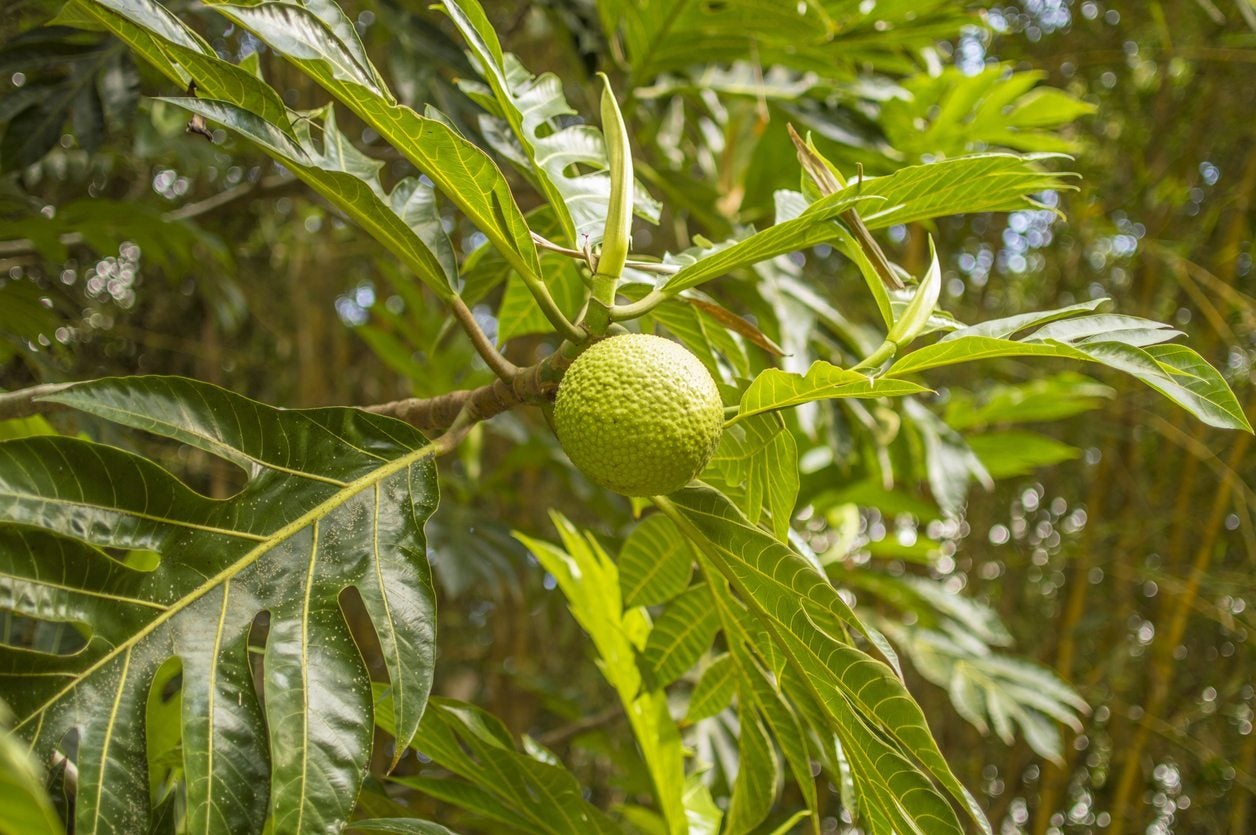Breadfruit Propagation Methods – How To Propagate Breadfruit Trees


Native to the south Pacific, breadfruit trees (Artocarpus altilis) are close relatives of mulberry and jackfruit. Their starchy fruit is packed with nutrition and is a valued food source throughout their native range. Although breadfruit trees are long living trees that reliably produce fruit for decades, many gardeners may find that having one tree is simply not enough. Continue reading to learn how to propagate breadfruit trees.
How to Propagate Breadfruit Trees from Seed
Breadfruit tree propagation can be done by seed. However, breadfruit seeds lose their viability in just a few weeks, so seeds need to be planted almost immediately after harvesting them from the ripened fruits. Unlike many plants, breadfruit relies on shade for germination and proper growth. To successfully propagate breadfruit, you will need to provide it with a location that is at least 50% shaded throughout the day. Fresh, ripened breadfruit seeds should be planted in a sandy, well-draining potting mix and kept moist and partially shaded until sprouting occurs. While starting new breadfruit trees by seed sounds easy enough, the problem is that most breadfruit varieties that are specifically grown for their delicious and nutritious fruit are actually seedless hybrids. Therefore, these seedless varieties need to be propagated by vegetative methods which include root cuttings, root suckers, air layering, stem cuttings, and grafting.
Other Breadfruit Propagation Methods
Below are the three most common vegetative breadfruit propagating methods: root cuttings, root suckers, and air layering.
Root Cuttings
To propagate breadfruit by root cuttings, first you will need to carefully expose the breadfruit roots that are growing near the soil surface. Remove soil around these roots, taking care to not cut or damage roots. Select a section of root that is 1 to 3 inches (2.5-8 cm.) in diameter. With a clean, sharp saw or loppers, cut a section of this root at least 3 inches (8 cm.) long but no longer than 10 inches (25 cm.) overall. Gently brush or wash all excess soil off of the cut section. With a clean, sharp knife make two to six shallow nicks in the bark. Lightly dust the root cutting with rooting hormone and plant it approximately 1 to 3 inches (2.5-8 cm.) deep in a well-draining, sandy soil mix. Again, this will need to be set in a partly shaded to shaded location and kept moist until sprouts begin to appear.
Root Suckers
Propagating breadfruit by root suckers is a very similar method to taking root cuttings, except that you will be selecting root sections that have already started producing shoots. First, find suckers that are producing growth above the soil level. Gently dig down to find the lateral root from which the sucker is sprouting. Preferably, this root section should contain its own vertical feeder roots. Cut the suckering lateral root section from the parent plant, including any vertical feeder roots. Plant the root sucker at the same depth it was previously growing in a well-draining, sandy soil mixture and keep it moist and partially shaded for approximately eight weeks.
Air Layering
Starting new breadfruit trees by air layering involves much less digging in the dirt. However, this breadfruit propagating method should only be done on young, immature breadfruit trees that are not old enough to produce fruit yet. First, select a stem or sucker that is at least 3-to 4 inches (8-10 cm.) tall. Find a leaf node on the top half of the stem or sucker and, with a sharp knife, remove about a 1 to 2 inch (2.5-5 cm.) tall section of the bark around the stem, just below the leaf node. You should remove only the bark, not cutting into the wood, but then lightly score the inner green cambium layer just beneath the bark. Dust this wound with rooting hormone, then quickly pack moist peat moss around it. Wrap clear plastic around the wound and peat moss, holding it in place around the top and bottom of the wound with rubber strips or string. In six to eight weeks, you should see roots forming in the plastic. You can then cut this newly rooted air layered cutting from the parent plant. Remove the plastic and plant it immediately in well-draining, sandy soil, in a partially to shaded location.
Sign up for the Gardening Know How newsletter today and receive a free copy of our e-book "How to Grow Delicious Tomatoes".

Darcy is a former contributor to Gardening Know How. She is a professional landscape designer and gardening writer with experience in plant sales. An avid gardener, Darcy has a passion for sharing practical tips to help others grow.